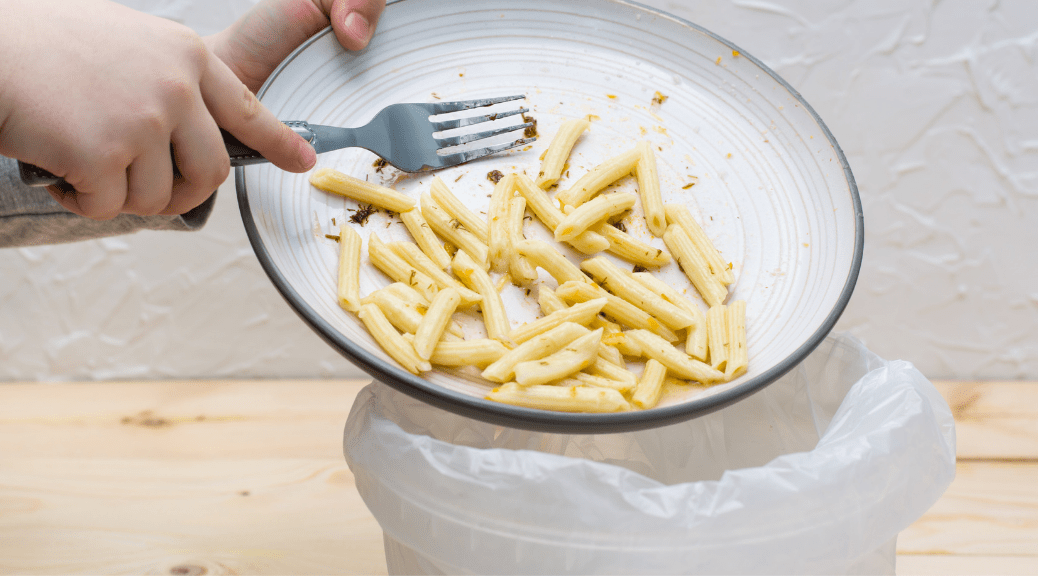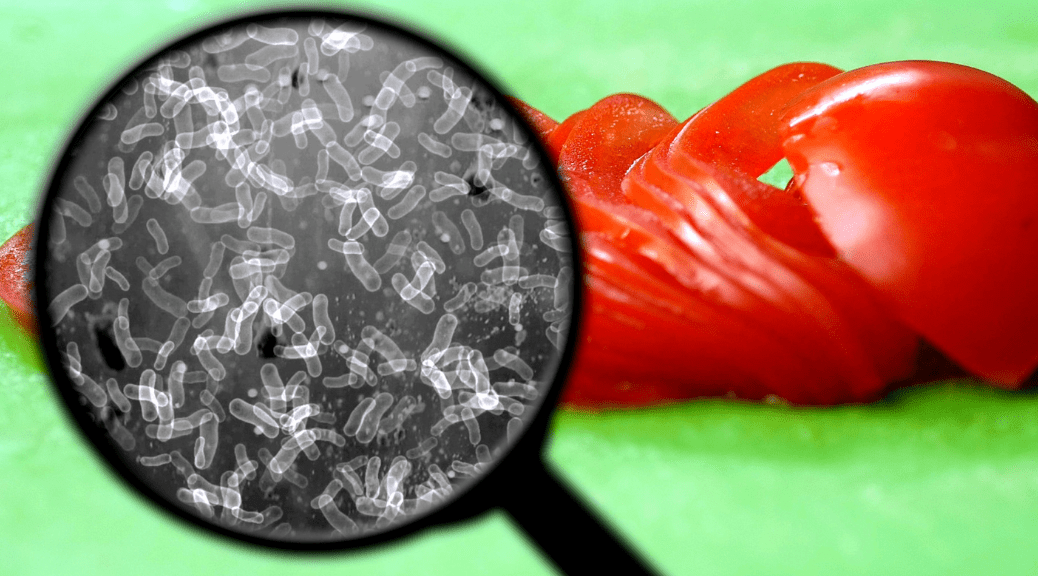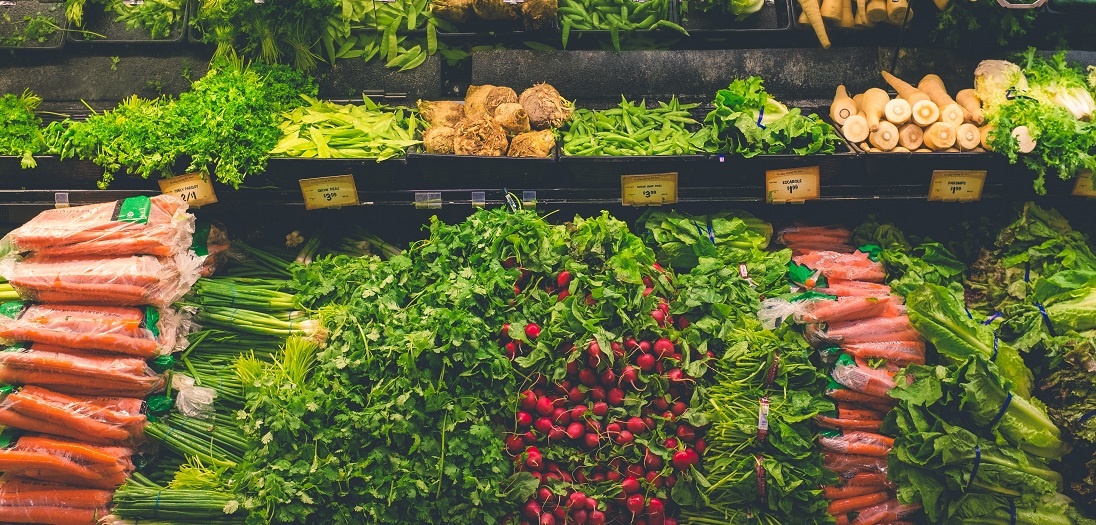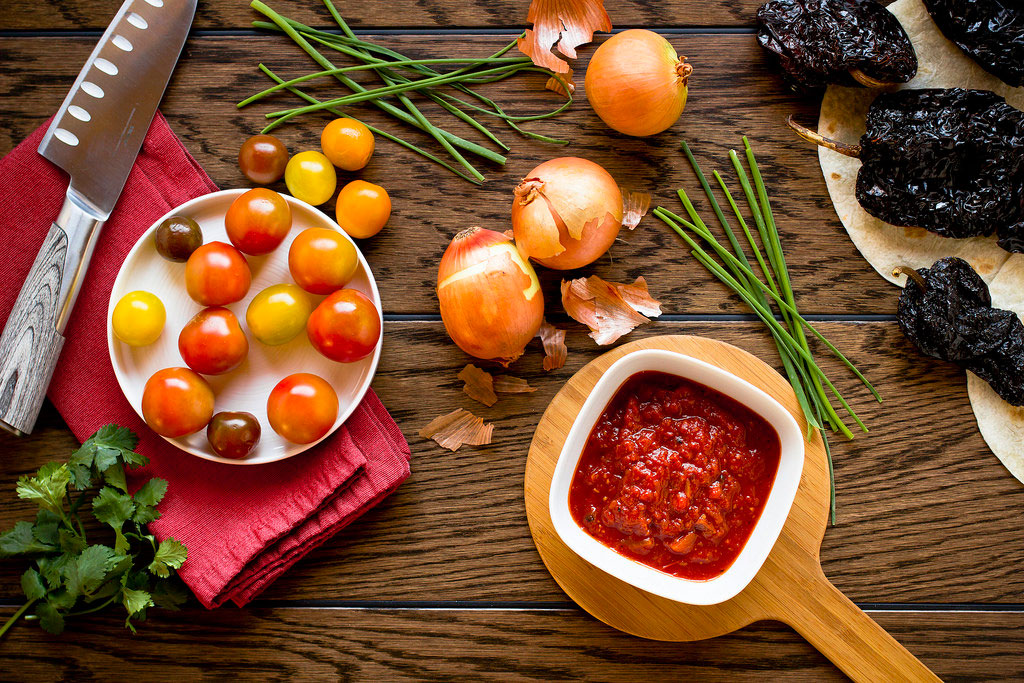Health insurance proves invaluable during challenging situations such as medical emergencies. It not only provides financial relief by covering the...

Wasting all that food
Wasting all that food

Think.Eat.Save. The people behind World Environment Day this year have most certainly deliberately left out the spaces between the words. Perhaps so that we make the connection between our food choices and the larger impacts of these choices—and realize that the connection is too close for comfort and also too close to keep ignoring.
For a moment, let’s not ask why the food was wasted in the first place. Or how many hungry mouths the wasted food could have fed. Let’s only be bothered about what happens when the wasted food is thrown away.
Well, it breaks down in landfill, together with other organic materials, and becomes the main contributor to the generation of methane – a powerful greenhouse gas nearly 25 times stronger than carbon dioxide at trapping heat in the atmosphere. This process of global warming is not invisible or abstract.
Further, the breakdown of food waste in landfills releases nutrients, which can migrate out of the waste and into the surrounding environment. Too many nutrients can pollute our groundwater and waterways.
Next, let’s consider the food production lifecycle, or supply chain. Soils, water, natural resources and energy are used to plant, harvest, transport, process, package, distribute and market our food products. When food is wasted, all of these resources are lost—but not without contributing to greenhouse gas emissions. This includes direct emissions from agriculture and those attributed to energy, transport, food production, processing and distribution. In particular, consider the cost of transporting food from farm to processor, wholesaler to restaurant, store to households – and finally, from garbage bins to landfills.
The Numbers Are Innocent – We Are Not
The numbers in the public archive on how much food is wasted globally on an annual basis are capable of inducing anything from a grimace to a jaw drop, to sarcasm even. Many of us may even find the scenario surreal, especially when the numbers are presented in relative terms – for example, every year, consumers in rich countries waste almost as much food (222 million tonnes) as the entire net food production of sub-Saharan Africa (230 million tonnes).
That said, numbers ought to make one wary too, for these are inherently distant, clinical, unreal even. One may be lulled into a false sense of security or into a convenient space of feeling oneself to be ‘too small to make a difference’.
Indeed, what about those oft-felt sentiments of ‘what am I but a speck of sand in this vastness’ and ‘what difference in the universe’s name will my standalone action make?’ Or, if one wants to appear particular, put it on the government. It’s their responsibility, right? Well, not quite so. For one, the government does not make our shopping list. Secondly, we do tend to throw a lot of good food that is still edible because of overstocking, cosmetic blemishes, misinformation, or plain ignorance if not indifference.
Gobbling down the Numbers
- The irrigation water used globally to grow food that is wasted would be enough for the domestic needs (at 200 litres per person per day) of 9 billion people – the number expected on the planet by 2050.
- If we planted trees on land currently used to grow unnecessary surplus and wasted food, this would offset a theoretical maximum of 100 per cent of greenhouse gas emissions from fossil fuel combustion.
- Between 2 and 500 times more carbon dioxide can be saved by feeding food waste to pigs rather than sending it for anaerobic digestion (the UK governments preferred option). But under European laws feeding food waste to pigs is banned. In Japan, South Korea and Taiwan, by contrast, it is mandatory to feed some food waste to pigs.
- The UK, US and Europe have nearly twice as much food as is required by the nutritional needs of their populations. Up to half the entire food supply is wasted between the farm and the fork.
- All the world’s nearly one billion hungry people could be lifted out of malnourishment on less than a quarter of the food that is wasted in the US, UK and Europe.
- An estimated 20 per cent to 40 per cent of fruits and vegetables in the UK are rejected even before they reach the shops – mostly because they do not match the supermarkets excessively strict cosmetic standards.
- The bread and other cereal products thrown away in UK households alone would have been enough to lift 30 million of the worlds hungry people out of malnourishment
All points are from Tristram Stuarts Waste: Uncovering the Global Food Scandal (Penguin, 2009)
Write a list
Check the ingredients in the cupboards and the refrigerator prior to writing the shopping list. This way we could avoid buying extra stuff. How often does the homemaker feel surprise/regret on noticing that the earlier packet of besan/ flour is almost crossing the ‘use by’ dates?
Also, check perishable items at home before buying again. Don’t let a spotty soft banana, bruised apple, or dry bread go into the bin.
The Action Begins at Home
Food waste can be minimized at home, in retail stores, and in restaurants. For example, grocery chains can mitigate wasting food by sorting out the spoiled food by separating it for organic usage. Furthermore, packaging foods in smaller quantities can eliminate or at least shorten food waste.
As consumers, when we begin to understand that food waste is something within our control—and not as intimidating as acting against the ozone layer depletion—we can simply begin by disciplining aspects of our purchase, consumption and disposal habits. To start with, why not simply buy less? Buying in smaller quantities means that we will most likely at least finish eating the food and throw out less. It follows that the process of packaging food differently can save money and waste not only for the consumer but the producer as well, and even more importantly, this process is environment-friendly. For the producer, the gains accrue in terms of less transporting and storage costs. Studies (including Global Food Losses and Food Waste – FAO, 2011) have shown that in developing countries food waste and losses occur mainly at early stages of the food value chain and can be traced back to financial, managerial and technical constraints in harvesting techniques as well as storage and cooling facilities. Thus, a strengthening of the supply chain through support to farmers and investments in infrastructure and transportation could help to reduce the amount of food loss and waste.
In medium- and high-income countries, on the other hand, food is wasted and lost mainly at later stages in the supply chain. The behaviour of consumers plays a huge part in industrialized countries. The website of United Nations Environment Programme (UNEP) quotes a recent study that has revealed that worldwide about one-third of all food produced gets lost or wasted in the food production and consumption systems – and that almost half of this quantity is the result of retailers and consumers in industrialized regions discarding food that is fit for consumption. Raising awareness among industries, retailers and consumers as well as finding beneficial uses for food that is presently thrown away are useful measures to decrease the amount of losses and waste.
Write a kitchen diary
Maintain a kitchen diary that shows how much food moves uneaten into the garbage bin.
Beauty fixation
Supermarkets are found to be responsible for huge amounts of food wastages due to their emphasis on cosmetic appearance of food products. Their criterion for rejecting products from suppliers on grounds of appearance of produce promotes chemical-intensive farming among farmers, which has adverse environmental and health effects in addition to being financially unattractive.
Rotate
Another good idea – especially if you stock processed food in big refrigerators – is to rotate the stuff once in a while to bring out the perishable packets to the front while placing the recent food towards the back.
Quick action plan: easier than i thought
A) Buy what i need
- Plan
- Make a list
- Be realistic about how much I need
- Resist temptation to overbuy something that’s on sale
B) Eat what i buy
- Use what spoils first
- Not to prepare too much
- Eat leftovers
C) Keep them fresh
- Store foods to keep them fresh as long as possible
D) Not to toss it before it spoils
- Be aware of food-expiration dates
- Understand shelf-life limits
- Use preservation methods: freezing, canning, drying, pickling, etc.
E) Not to think trash
- Share extra food before it spoils
- Compost inedible food
The consumption value chain
However, the rest of us can hardly afford to feel sanctimonious or be complacent by putting all blame and responsibility at the door of the rich countries. As emerging economies like India come up the value chain, it may be safely assumed that their increasingly larger numbers of prosperous middle classes and the rich/super-rich will start showing behaviour similar to their counterparts in industrialized countries.
Statistics on how many tonnes of quality food are wasted in restaurants, make-shift food joints, social gatherings and households remind us that food waste is happening all around us. In 2011, India’s Food Minister KV Thomas had said that around 100,000 weddings and social events were held in the country every day. He remarked that food wasted each day at weddings and family functions in Mumbai alone would be enough to feed the city’s vast slum population.
Prevent storage losses if any
When grains and pulses are purchased in large quantities, keep a tablet of insect/weevil repellents in the container. Products such as sooji and dalia when stored for a longer period can be roasted lightly to prevent weevil infestation.
What is a food bank?
A food bank is a nonprofit distribution enterprise that serves the community through institutional feeding programmes. This acquires donated food in the form of grains, pulses, oil, spices, etc., sourced on the basis of community food habits and makes these available through a network of community-owned agencies. These institutional feeding programmes include school feeding programmes, after-school programmes, shelter homes, old-age homes and substance abuse clinics.
Keep an eye on the serving portion
Be wary of the quantity of food that goes onto the plate. Cultivate the habit of refilling only when the plate is cleared. Do not overestimate and tend to be generous what the guests and children can have at a time. By this, one can discourage children form overeating too.
Make compost
As much as 30 per cent of household waste can be diverted away from garbage when composting is done at home. Table scraps, fruit and vegetable scraps, crushed egg shells, tea leaves, stalks and coffee grounds are some of the materials that are good for making compost.
It is not difficult to make compost at homes. All that is required is a large drum or tin to hold the soil and the scraps together for decomposition to happen. You may take help from garden associations or look for information on the Internet.
Where is the linkage?
It is true that people cannot be forced to cut back on wasteful displays of food and spending, but if there is a way to get them thinking about the enormous amounts of food that get wasted, it will at least be a beginning. Concurrent with that must be the facilitation of system linkages including food waste collection services and observance of best practices in diverting the waste food to its best use – for instance, whether it will go towards feeding the hungry or be used as animal feed or nutrient-rich compost. There are also options to convert fats, oils, and grease (FOG) to biodiesel, replacing fossil fuel use. So far, efforts to pick up the leftovers and distribute them to the poor have not taken off in India due to lack of infrastructure. Many of us would think that there would be NGOs to provide a linkage between giver and needy ones. In India, though, practically no such NGO exists to pick up the surplus at all times.
So, what happened to Delhi Food Bank, launched as part of the India Food Banking Network (IFBN) with much fanfare in 2012 by Delhi Chief Minister Sheila Dikshit and Sam Pitorda, Advisor to the Prime Minister on Public Information Infrastructure and Innovations? Delhi was to be the first city in the country to set up food banks through which excess cooked and uncooked food would be collected from wedding receptions, parties, social functions, hotels and individual donors for distribution among hungry and poor people.
The scheme was modelled on the lines of food banks in Chicago in the United States where community groups ran them to feed hungry people by collecting excess food from hotels and wedding receptions, and through voluntary donations from individuals as well as various organizations. In fact, Delhi Food Bank was planned to be the prototype that IFBN would seek to modify, strengthen and replicate at a national level, so that by 2020 every district of India had access to a food bank.
We were informed that the infrastructure for collecting and distributing the food was being developed in cooperation with Delhi Government, DLF Foundation, Reliance Foundation and Cargill India. Donors of food only needed to send an sms to 58888, following which IFBN volunteers would collect the food items, while those who needed food could also send sms to same number.
As of today, Delhi Food Bank collects only non-perishables, not cooked food. The latter requires infrastructure like refrigeration, especially when the calls are received past the meal times. Furthermore, organizations are looking for regular and sustainable supply of excess food.
For the family pet
Stop buying processed dog food. It is a common practice among households to prepare the exact amount of chapattis/rice. Use the surplus from your chapattis/rice along with meat/eggs/milk/vegetables to give your pet a wholesome meal rather than the dry processed meal. It does not take much time to prepare a simple meal. Moreover; the packaged meal is not bombarded with extra goodness as it purports to be and saves money too.
Expect the waste
Whenever we are planning a wedding, a party, or some such similar gathering, some amount of surplus food is inevitable. Suppose we plan ahead by identifying the needy in nearby areas for distributing the excess food? Would not that be a practical, engaging and effective way of participating in the food drive?
Responding to queries from Lakshmi Bhavani of Consumer Voice, Kuldip Nar, Managing Director, Aidmatrix Foundation (IFBN member responsible for operationalizing Delhi Food Bank), sent in his comments via email:
‘Non-perishable food waste is the focus of the Delhi Food Bank initiative and we are presently feeding 10,000 meals daily with the salvaging and donation of food, which helps those who need it the most.
For perishable food including agriculture produce or cooked food, there can be a system that can salvage and guarantee the minimum food amounts for a nutritional food plate. This, in turn, will help provide the guaranteed feeding that is required on a daily basis as a process.’
Waste as opportunity
Waste represents both a problem and an opportunity. At current levels, production, consumption and waste disposal patterns are not in sync with sustainable living. To drastically reduce waste generation, we need to make products with fewer natural resources and also break the link between economic growth and waste growth. Most products should be reused or their materials recycled.
The benefit of being at the minimal level of the waste hierarchy will not just be environmental. Waste is a drag on the economy. We can save money by making products with fewer natural resources, and we can reduce the costs of waste treatment and disposal.
Related
Tips to Increase the Chances of Avoiding Health Insurance Claims Rejection
Personal Accident Insurance
During these times when people have to adhere to strict timelines, work longer hours, attend tours and meetings, the working class is always on the...
Portability of Health Insurance
If you find yourself dissatisfied with the services provided by your current mobile phone service provider and wish to switch to a different...








